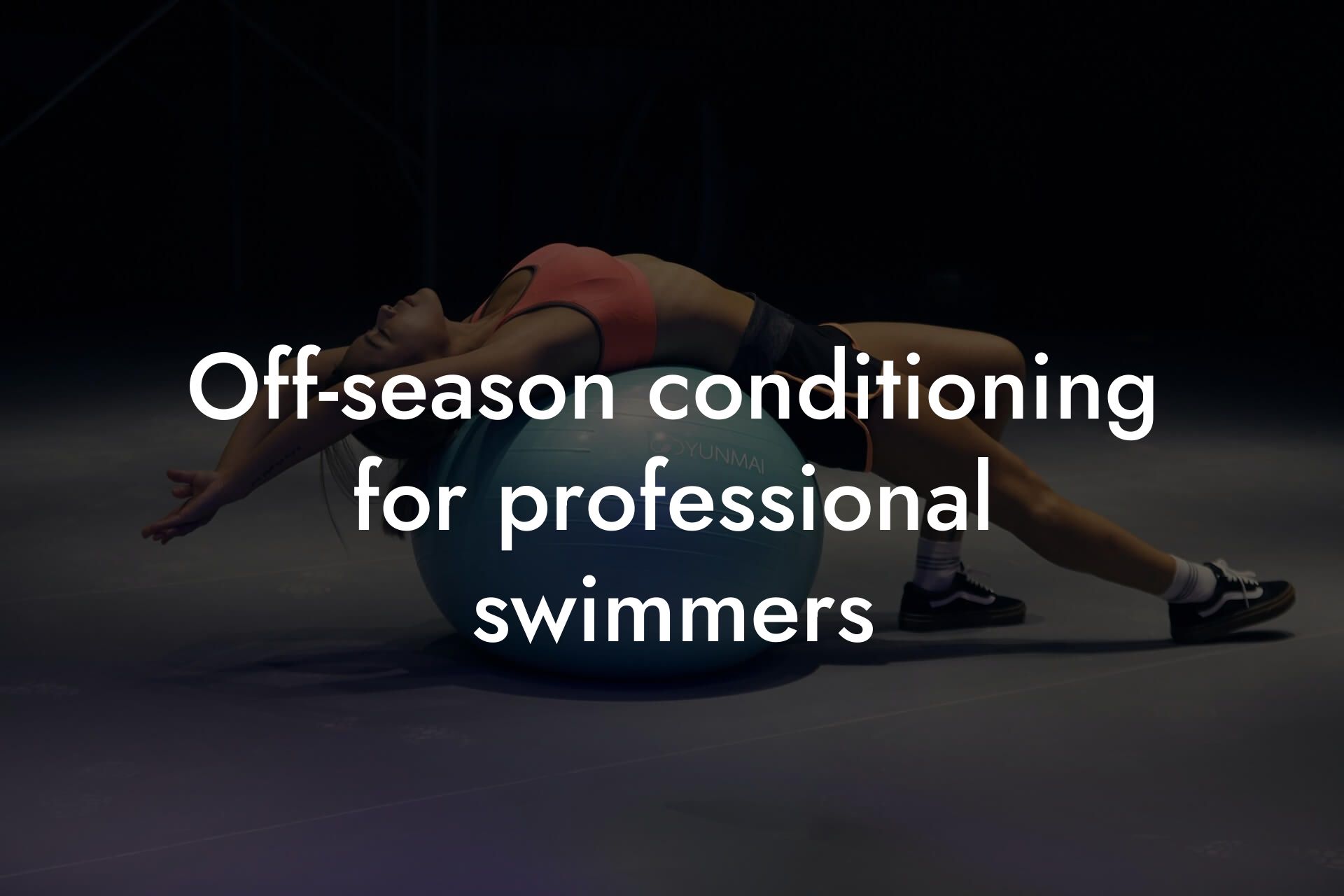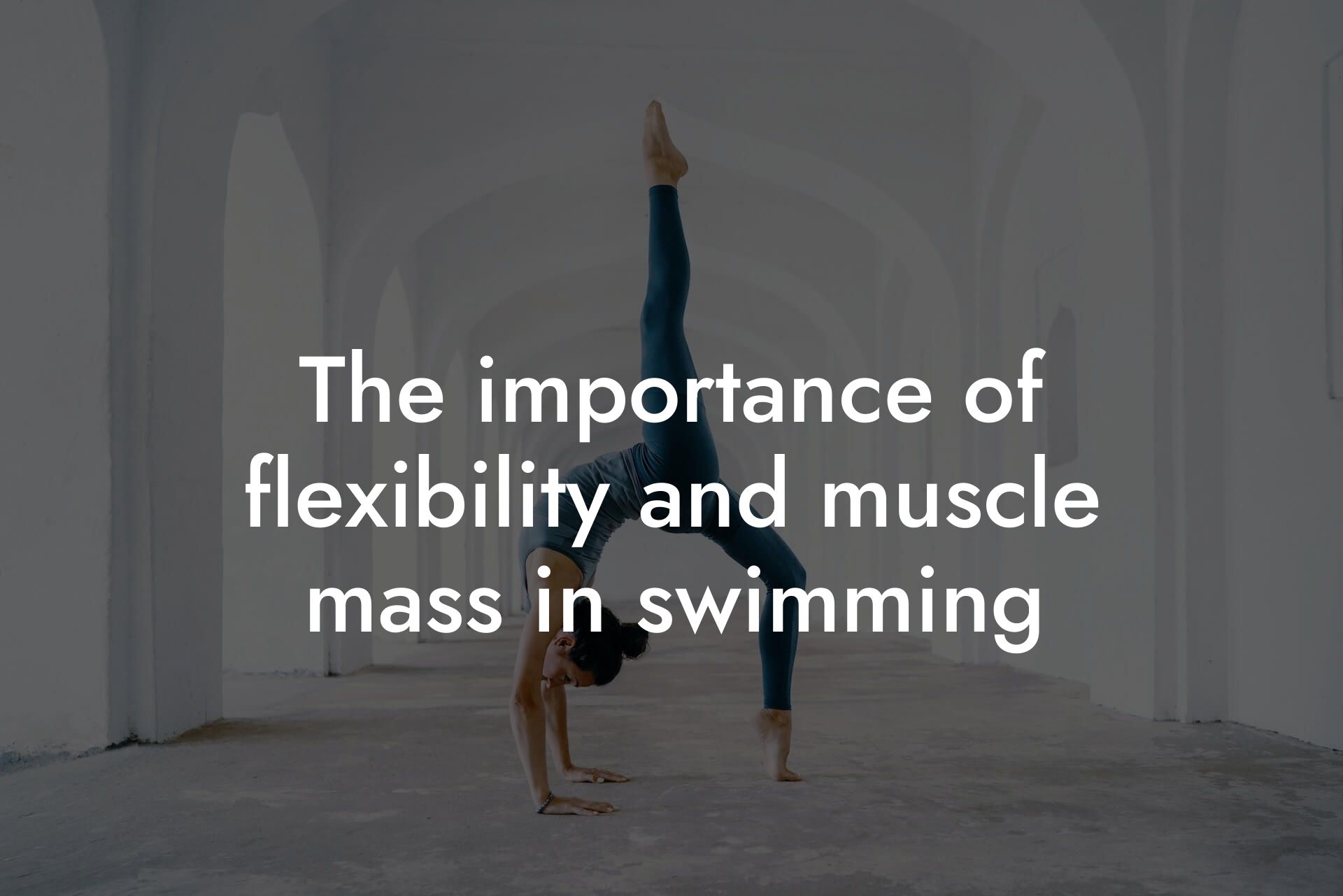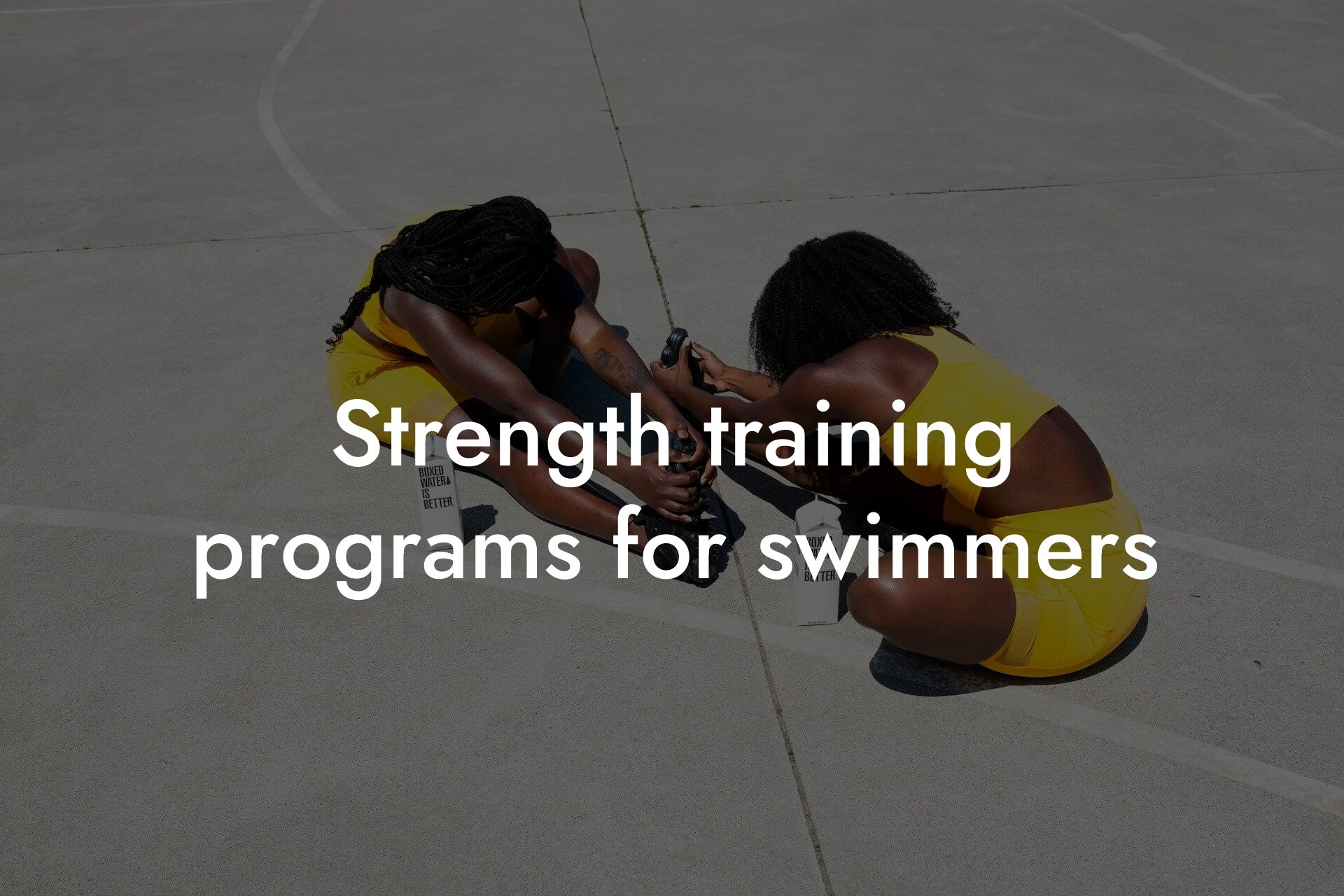As a high-earning professional interested in optimizing your physical appearance and performance, understanding the role of body composition in swimming speed and endurance is crucial. At Tano Performance Group, we specialize in providing comprehensive body assessments using DEXA technology to help individuals like you achieve their goals. In this article, we'll delve into the importance of body composition in swimming and explore how it impacts speed and endurance.
Table of Contents
What is Body Composition?
Body composition refers to the proportion of fat and lean mass in the body. It's a critical aspect of overall health and athletic performance, as it directly affects an individual's power-to-weight ratio, muscle strength, and endurance. In swimming, body composition plays a vital role in determining an athlete's speed, agility, and overall performance.
The Ideal Body Composition for Swimmers
For swimmers, an ideal body composition typically consists of a low percentage of body fat and a high percentage of lean mass. This is because excess body fat can create drag in the water, reducing speed and increasing energy expenditure. On the other hand, lean mass, particularly in the upper body, is essential for generating power and propulsion through the water.
Research suggests that elite swimmers typically have a body fat percentage ranging from 6-12% for men and 16-23% for women. In contrast, recreational swimmers may have a higher body fat percentage, which can negatively impact their performance.
How Body Composition Affects Swimming Speed
Body composition has a significant impact on swimming speed. Excess body fat can increase drag, reducing speed and making it more difficult to maintain a fast pace. On the other hand, a leaner body composition can help swimmers cut through the water more efficiently, resulting in faster times.
In addition, a high percentage of lean mass in the upper body can help generate more power and propulsion through the water, further increasing speed. This is why many elite swimmers focus on building strong shoulders, back, and arm muscles to enhance their swimming performance.
The Impact of Body Composition on Swimming Endurance
Body composition also plays a critical role in swimming endurance. A higher percentage of body fat can lead to increased energy expenditure, making it more difficult to maintain a steady pace over longer distances. This is because excess body fat requires more oxygen to sustain, diverting energy away from the muscles and reducing endurance.
On the other hand, a leaner body composition can help swimmers conserve energy and maintain a steady pace over longer distances. This is why many endurance swimmers focus on building a strong aerobic base and optimizing their body composition to improve their overall performance.
The Role of Muscle Mass in Swimming Performance
Muscle mass is a critical component of body composition, particularly in swimming. A high percentage of muscle mass in the upper body can help generate more power and propulsion through the water, increasing speed and endurance.
In addition, muscle mass plays a key role in maintaining good technique and reducing the risk of injury. Stronger muscles can help swimmers maintain a streamlined position in the water, reducing drag and improving overall efficiency.
How to Optimize Body Composition for Swimming
Optimizing body composition for swimming requires a combination of proper nutrition, training, and recovery. Here are some tips to help you get started:
Focus on building lean mass through resistance training and high-intensity interval training (HIIT). This can help increase muscle mass and reduce body fat percentage.
Pay attention to your nutrition, focusing on a balanced diet that includes plenty of protein, complex carbohydrates, and healthy fats. Avoid excessive sugar and saturated fat intake, which can contribute to increased body fat.
Incorporate plyometric and explosive training into your routine to improve power and propulsion through the water.
Get enough rest and recovery time to allow your muscles to repair and rebuild. This is critical for optimizing body composition and improving overall performance.
In conclusion, body composition plays a critical role in swimming speed and endurance. By understanding the importance of body composition and taking steps to optimize it, swimmers can improve their overall performance and achieve their goals. At Tano Performance Group, we're committed to helping high-earning professionals like you achieve optimal body composition and performance using our state-of-the-art DEXA technology. Contact us today to learn more about how we can help you take your swimming performance to the next level.
Frequently Asked Questions
What is body composition, and why is it important for swimming?
Body composition refers to the proportion of fat and lean mass in the body. In swimming, body composition plays a crucial role in determining speed and endurance. A swimmer with a high percentage of lean mass and low body fat will generally be faster and more efficient in the water.
How does body fat affect swimming performance?
Excess body fat can hinder swimming performance by increasing drag, reducing buoyancy, and decreasing power output. Additionally, carrying excess fat can lead to increased energy expenditure, making it more difficult to maintain a high pace over a long distance.
What is the ideal body fat percentage for swimmers?
The ideal body fat percentage for swimmers varies depending on the individual and their specific goals. Generally, male swimmers aim for a body fat percentage between 6-12%, while female swimmers aim for 16-23%. However, these are general guidelines, and the optimal body fat percentage may be higher or lower depending on the individual's swimming style, distance, and goals.
How does lean mass affect swimming performance?
Lean mass, which includes muscle and bone, is essential for generating power and speed in the water. A swimmer with a high percentage of lean mass will be able to generate more force and propel themselves through the water more efficiently.
What is the relationship between body composition and swimming speed?
Research has shown that there is a strong correlation between body composition and swimming speed. Swimmers with a higher percentage of lean mass and lower body fat tend to be faster and more efficient in the water.
How does body composition affect swimming endurance?
Body composition also plays a critical role in swimming endurance. Swimmers with a higher percentage of lean mass and lower body fat tend to have greater aerobic capacity, allowing them to maintain a high pace over a longer distance.
What are the key components of body composition for swimmers?
The key components of body composition for swimmers include lean mass, body fat, and bone density. A swimmer's body composition is typically assessed using a combination of measurements, including skinfold calipers, dual-energy X-ray absorptiometry (DXA), and bioelectrical impedance analysis (BIA).
How can I measure my body composition?
There are several ways to measure body composition, including skinfold calipers, DXA, BIA, and hydrostatic weighing. It's essential to work with a qualified professional, such as a sports dietitian or exercise physiologist, to ensure accurate and reliable measurements.
What is the importance of bone density for swimmers?
Bone density is critical for swimmers, as it affects their ability to generate power and speed in the water. Swimmers with low bone density may be at increased risk of injury, particularly to the shoulders and hips.
How can I improve my body composition for swimming?
Improving body composition for swimming requires a combination of proper nutrition, regular exercise, and sufficient rest and recovery. Focus on consuming a balanced diet that includes plenty of protein, healthy fats, and complex carbohydrates, and engage in regular strength training and cardiovascular exercise.
What are the benefits of strength training for swimmers?
Strength training is essential for swimmers, as it helps to improve power, speed, and endurance. A well-designed strength training program can also help to reduce the risk of injury and improve overall body composition.
How does nutrition affect body composition for swimmers?
Nutrition plays a critical role in body composition for swimmers. A well-balanced diet that includes plenty of protein, healthy fats, and complex carbohydrates can help to support muscle growth and repair, while also reducing body fat.
What are the best foods for swimmers?
The best foods for swimmers include lean protein sources, such as chicken and fish, complex carbohydrates, such as whole grains and fruits, and healthy fats, such as nuts and seeds. It's also essential to stay hydrated by drinking plenty of water and electrolyte-rich beverages.
How can I reduce my body fat percentage for swimming?
Reducing body fat percentage for swimming requires a combination of proper nutrition, regular exercise, and sufficient rest and recovery. Focus on consuming a calorie-controlled diet, engaging in regular cardiovascular exercise, and incorporating strength training to build lean mass.
What are the risks of having too much body fat for swimmers?
Having too much body fat can increase the risk of injury, reduce swimming performance, and decrease overall health and well-being. Excess body fat can also lead to decreased buoyancy, increased drag, and reduced power output.
How does body composition affect swimming technique?
Body composition can affect swimming technique, as excess body fat can alter the swimmer's center of gravity and reduce their ability to maintain a streamlined position in the water. A swimmer with a high percentage of lean mass may be able to maintain a more efficient technique.
Can body composition be improved through swimming alone?
While swimming can help to improve body composition, it is unlikely to be effective alone. A comprehensive training program that includes strength training, cardiovascular exercise, and proper nutrition is necessary to achieve optimal body composition for swimming.
How often should I measure my body composition?
It's recommended to measure body composition regularly, ideally every 4-6 weeks, to track progress and make adjustments to training and nutrition as needed. Working with a qualified professional, such as a sports dietitian or exercise physiologist, can help to ensure accurate and reliable measurements.
What are the benefits of working with a sports dietitian or exercise physiologist?
Working with a sports dietitian or exercise physiologist can help swimmers to develop a personalized training and nutrition plan that is tailored to their specific needs and goals. These professionals can provide guidance on body composition measurement, nutrition planning, and exercise programming to help swimmers achieve optimal performance.
How can I maintain my body composition during periods of rest or injury?
Maintaining body composition during periods of rest or injury requires careful planning and attention to nutrition and exercise. Focus on consuming a balanced diet, engaging in low-intensity exercise, and incorporating strength training to maintain lean mass.
What are the long-term benefits of optimal body composition for swimmers?
Optimal body composition can provide long-term benefits for swimmers, including improved performance, reduced risk of injury, and enhanced overall health and well-being. Additionally, maintaining a healthy body composition can help to reduce the risk of chronic diseases, such as heart disease and diabetes.
Here are some related articles you might love...
- Off-season conditioning for professional swimmers
- The importance of flexibility and muscle mass in swimming
- Strength training programs for swimmers
- Using DEXA scans to optimize swimmer performance
- Bone density and its impact on injury prevention in swimming
- Recovery techniques for swimmers after intense training
- Balancing strength and endurance in swimming
- Nutrition strategies for swimmers to maintain energy levels
- Reducing body fat for better buoyancy and speed in swimming
Zak Faulkner
Zak Faulkner is a leading authority in the realm of physical health and body composition analysis, with over 15 years of experience helping professionals optimise their fitness and well-being. As one the experts behind Tano Performance Group, Zak has dedicated his career to providing in-depth, science-backed insights that empower clients to elevate their physical performance and overall health.
With extensive knowledge of DEXA technology, Zak specializes in delivering comprehensive body assessments that offer precise data on body fat, muscle mass, bone density, and overall physique. His expertise enables individuals to make informed decisions and achieve their fitness goals with accuracy and confidence. Zak’s approach is rooted in a deep understanding of human physiology, combined with a passion for helping clients unlock their full potential through personalised strategies.
Over the years, Zak has earned a reputation for his commitment to excellence, precision, and client-focused service. His guidance is trusted by top professionals who demand the best when it comes to their health. Whether advising on fitness programs, nutritional strategies, or long-term wellness plans, Zak Faulkner’s insights are a valuable resource for anyone serious about taking their health and fitness to the next level.
At Tano Performance Group, Zak continues to lead our Content Team revolutionising how professionals approach their physical health, offering unparalleled expertise that drives real results.




